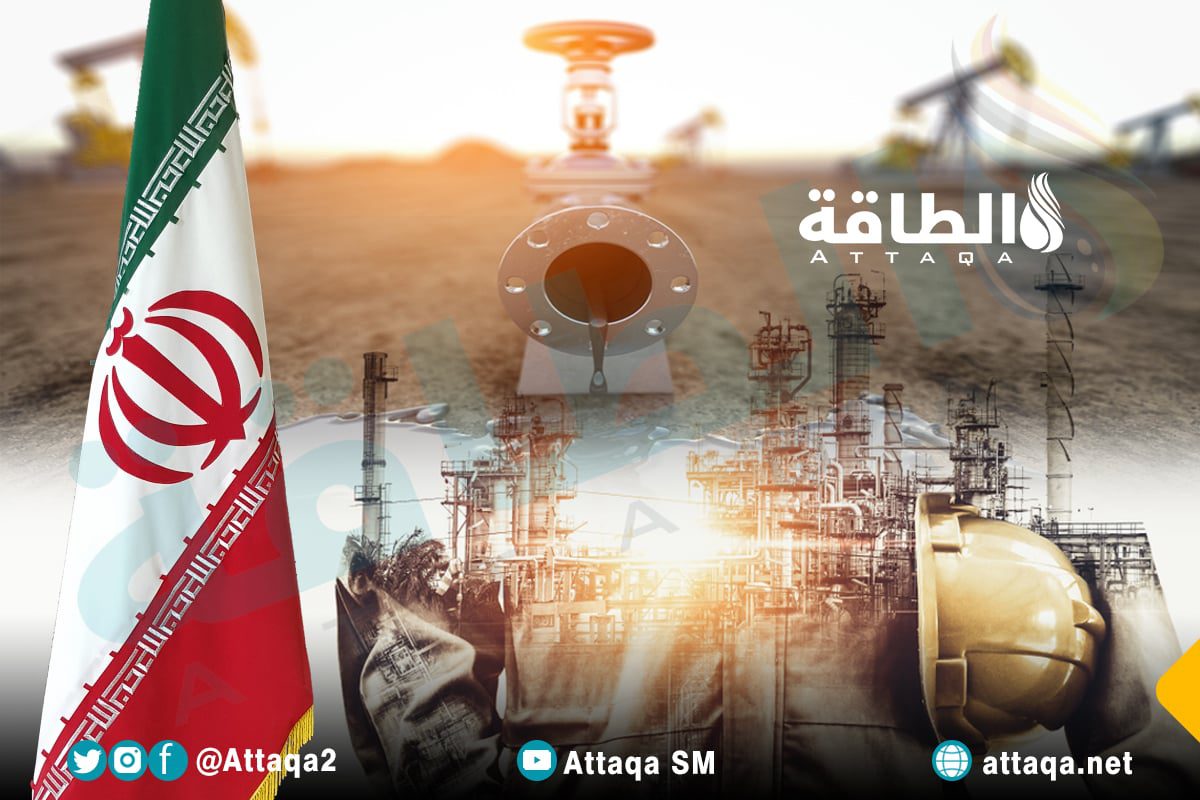The oil and gas sector in Iran plans to attract investments of more than $250 billion over the next 8 years, despite the US sanctions on Tehran, which are causing the reluctance of many international companies.
During his participation in the OPEC conference, Iranian Oil Minister Javad Oji said that during the past 20 months, his country signed oil contracts worth $40 billion with local and foreign companies.
Russia is at the forefront of countries that have announced huge investments in the oil and gas sector in Iran during the past months, as Gazprom signed agreements with the Iranian Oil Company during 2022, which include investments of about $40 billion.
The Gazprom agreements, which are the largest deal in the history of the Iranian oil industry, included spending $25 billion on developing gas fields, especially Kish, North Pars, and South Pars, in addition to completing liquefied natural gas projects, establishing gas export pipelines, and $15 billion on developing 6 oil fields. , including Mansouri, Abu Timur, Karanj, Azar and Ginkola.
Oil and gas reserves in Iran
Oji confirmed that Iran ranks first in the world in terms of total oil and gas reserves, according to data seen by the specialized energy platform, quoting IRNA.
He said: “Iran has more than 33 trillion cubic meters of natural gas reserves and 154 billion barrels of recoverable oil reserves.”
The Iranian Oil Minister indicated that his country’s daily production amounts to 3.8 million barrels of crude oil and gas condensate and more than one billion cubic meters of gas, explaining that due to the high capacity of oil and gas production in Iran, it is planned to increase production capacity.
He stressed that local experts are developing oil and gas fields in Iran themselves despite the sanctions, saying: “Today in Iran, oil and gas refineries are being developed and repaired without the presence of foreign experts.”
US sanctions
Ochi said that his country is facing unjust sanctions, as the sanctions imposed on the Iranian economy and oil industry have nothing to do with the United Nations.
He added, “With our special experience in the long years of sanctions in the field of developing oil and gas fields and building refineries and petrochemical complexes, we have today the ability to increase oil and gas production in Iran.”
Iran has been subject to US sanctions since former US President Donald Trump withdrew from the nuclear agreement in 2018, which deprived Tehran of more than $100 billion in oil revenues, according to official Iranian statements.
Iranian gas investments
Auchi stressed the world’s need for energy security, especially in the field of natural gas, explaining that Iranian onshore and offshore gas fields are being developed by Iranian companies, and his country has reached self-sufficiency in horizontal and vertical drilling.
He pointed out that Iran has 10 oil refineries and more than 21 gas refineries, as his country possesses the knowledge and technology to build refineries, and during the next 8 years it is possible to attract 250 billion dollars to invest in the oil and gas sector.
He said that by amending the new pattern of oil contracts, “we look forward to making participation in the oil and gas industry in Iran attractive to investors,” explaining that his country has signed agreements and contracts suitable for developing oil and gas fields and building refineries in recent years in the form of a new model for Iranian oil contracts. The style of these contracts is attractive to investors.
He added that based on the new pattern of oil contracts, investors will use the proceeds of selling hydrocarbon field products, which was welcomed by countries such as Russia, and even oil companies active in Iran’s neighboring countries.
He pointed out that the new pattern of oil contracts is taking place in a manner in which the return on investment is within the shortest possible time, “as we witnessed good profit in these contracts to develop oil and gas fields in Iran for foreign investors.”
“Looking at the gas reserves in Iran, if investors develop this type of field and turn it into an LNG producer in blocks, they can market and export the final product themselves so that they can make their investment and profit from this type of project,” Oji said.

Oil refining in Iran
The Iranian Oil Minister affirmed the government’s intention to develop oil refinery projects, explaining that foreign investors can withdraw their expenses and capital from the place of selling oil derivatives, after launching such projects.
Oji said that his country plans to obtain 7,000 megawatts of renewable energy in the next 3 years, and work is also underway to stop flaring gas associated with oil operations, as projects worth $6 billion have been identified, and some of these projects have been completed at the beginning of 2023.
He pointed out that projects in the field of transportation, industries and power stations have also been identified in the field of energy improvement, stressing the invitation of investors inside and outside the country to participate in all projects related to the collection of associated gases, renewable energies and the rationalization of energy consumption.
The Iranian oil minister stressed that fossil fuels cannot be reduced in any way, which requires the development of fossil fuels in the future, in conjunction with thinking about developing new energies.
Oji stressed that the future of the energy market cannot be predicted, saying: “Fossil energies will be used in the future with new energies for a long time,” explaining that gas-exporting countries can provide a large part of the world’s gas needs.

Leave a Reply